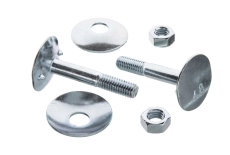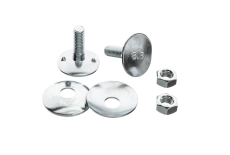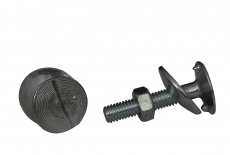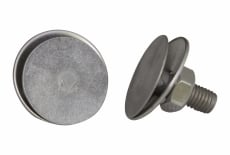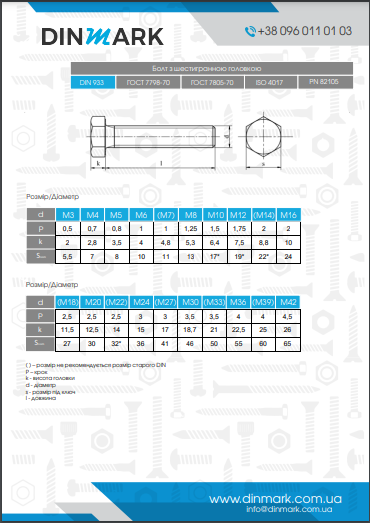
Elevator bucket bolt DIN 15237 is a fastening element for an elevator bucket (elevator) with a large countersunk head with two protrusions on the bottom side and a rod with a large pitch full metric thread. Elevator bolts are fasteners that consist of a head and a rod with a metric thread. Elevator bolts are supplied with a standard or locking hexagonal nut and a hemispherical elevator washer.
Strength class DIN 15237
The strength class of a Din 15237 bolt is the maximum applied force at which the bolt begins to fracture. Din 15237 bolts are manufactured in strength classes 3.6, 4.6 and 8.8. From strength class 8.8, the bolt is considered high-strength.
DIN 15237 fastening group
Depending on the material of manufacture, DIN 15237 bolts are divided into groups:
- High-strength fasteners - bolts are made of steel of strength class 8.8 and above
- Stainless fasteners - bolts made of stainless steel
Materials for the manufacture of DIN 15237 bolts
DIN 15237 bolts are made of the following materials:
- Steel in strength classes 3.6, 4.6 and 8.8. Which can be additionally coated with zinc. Zinc protects against corrosion if the fasteners are to be used in aggressive environments.
- Stainless steel. A4 steel grade allows the fasteners to be used at significant temperature drops and in aggressive and humid environments.
Areas of application for DIN 15237 bolts
The conveyor (elevator) bolt is installed from the side of the conveyor belt through the prepared perforated hole, then the bucket is put on it and fixed with a nut and a plate washer. The elevator bolt should be tightened so that its head is slightly below the surface of the belt (where possible), so that the drive pulley will contact the belt, not the bolts, and will not interfere with the smooth operation of the conveyor.


